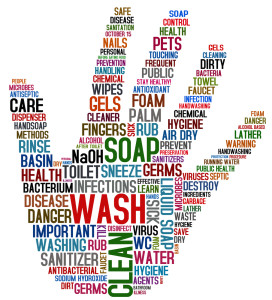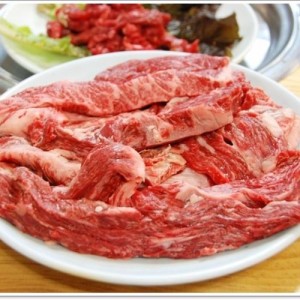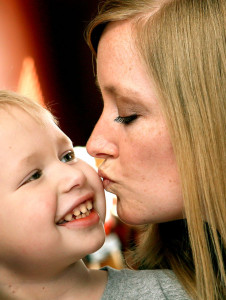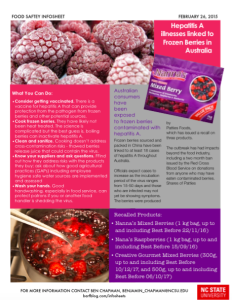Food Safety Talk, a bi-weekly podcast for food safety nerds, by food safety nerds. The podcast is hosted by Ben Chapman and barfblog contributor Don Schaffner, Extension Specialist in Food Science and Professor at Rutgers University. Every two weeks or so, Ben and Don get together virtually and talk for about an hour. They talk about what’s on their minds or in the news regarding food safety, and popular culture. They strive to be relevant, funny and informative — sometimes they succeed. You can download the audio recordings right from the website, or subscribe using iTunes.
This show starts with Don and Ben talking about the number-six item on their list of things to discuss for the episode: Yosemite and how beautiful it is; Ben rates it at three thermometers, a rating system they invented. Ben’s favorite thermometer is the Comark PDT300, even though someone sent him a ThermoWorks Thermapen which is Don’s favorite. Ben’s hockey team has been using thermometers when the grill sausages, this is what Ben’s contribution to the grill-outs. Ben gets chirped for being the guy who brings the thermometer to the hockey grill. Ben is now supplying thermometers to other hockey guys.
Don talks about his lunch date with a podcast celebrity from the 5by5 network. Don tells the whole story about flying business class from Brazil to Texas then while in Texas, buying comic books and having lunch with Dan Benjamin. Dan asked Don lots of food safety questions; they didn’t talk much about 5by5. After this, Don attended the NoroCORE Food Virology meeting with Ben (the guys talked in real life, not just over Skype).
The conversation then turns to food safety culture and what that really means as it is in the literature. Ben talks about a conversation he had about food safety culture with a person trying to develop a presentation on food safety culture for farmers. Don shares an email from Doug about food safety concerns at [insert big company name] that shared a Dropbox video of text and images displaying poor food safety. The guys then talk about the difficulties of creating a food safety culture when no one thinks it’s important. Ben talks about the many things that must be in place before a food safety culture can begin to be established.
Then conversation then transitions to how to talk about food safety risks. Ben suggests talking about risks frankly. The guys then discuss the uncertainties around risks and how to discuss them. Discussing how quantitative risk assessments are performed and applied, and the issue of uncertainty messages, also come up in conversation. Salmonella Hypetheticum then comes up in the conversation.
Don then brings up a book that he has been reviewing about food waste. The same food waste topic has been featured on a television show that Don’s real life friend Randy Worobo was a guest on. The issue of food waste and risk is discussed, with a focus on lower income persons and how to manage the need to save money against food safety risk decisions. The use of fruits and vegetables that are past their optimum date to make infused vodka brings back memories of pruno-associated C. botulinum outbreaks. Ben appreciates Don for working the math around food safety questions and the time and effort it takes to accurately answer without just ‘no don’t do that thing’.
Ben then brings up the issue of thawing a turkey on the counter the risks associated with that action. Doug Powell has a paper in the Canadian Journal of Dietetics Practice Research about the calculations around thawing a turkey at room temperature. Actually, it is ok to thaw a turkey at room temperature if you are within certain parameters. This topic follows along with the possible Food Safety Talk tag line: and it’s messy.
Next, Ben wants to talk about communication, but Don talks about the decision to eat fresh produce in Brazil, and other’s decision not to eat the fresh produce while visiting. While at meetings Ben seems to focus on following the news and typing up Barfblog posts (some people are ok with that and will resist complaining; Ben does type rather loudly). When Ben gets really into what he is writing, he lets out really loud sighs others have noticed, but Ben hasn’t noticed his inappropriate sighing.
Transitioning back to communication, Ben brings up a hepatitis A outbreak reported in Cumberland County Maine, but without a retail location identified. The State of Maine is taking some flack (could we call this chirping, see above) for their handling of this incident; the State of Maine tried to explain that this is because of a lack of personnel with specific expertise. Maine has been in the news for other public health issues… a nurse breached a quarantine for Ebola by going for a bike ride. Don suggests the public health system in Maine may be broken, Ben suggests this may be due to their having just eleven health inspectors for the whole state.
In the After Dark session, Ben reveals the most popular Food Safety Talk episode. The guys aren’t sure which episode they just completed, 74?, 75?, whatever it takes. Speaking of documentaries, Don recommends Jodorowsky’s Dune a documentary about a movie that was never made.










